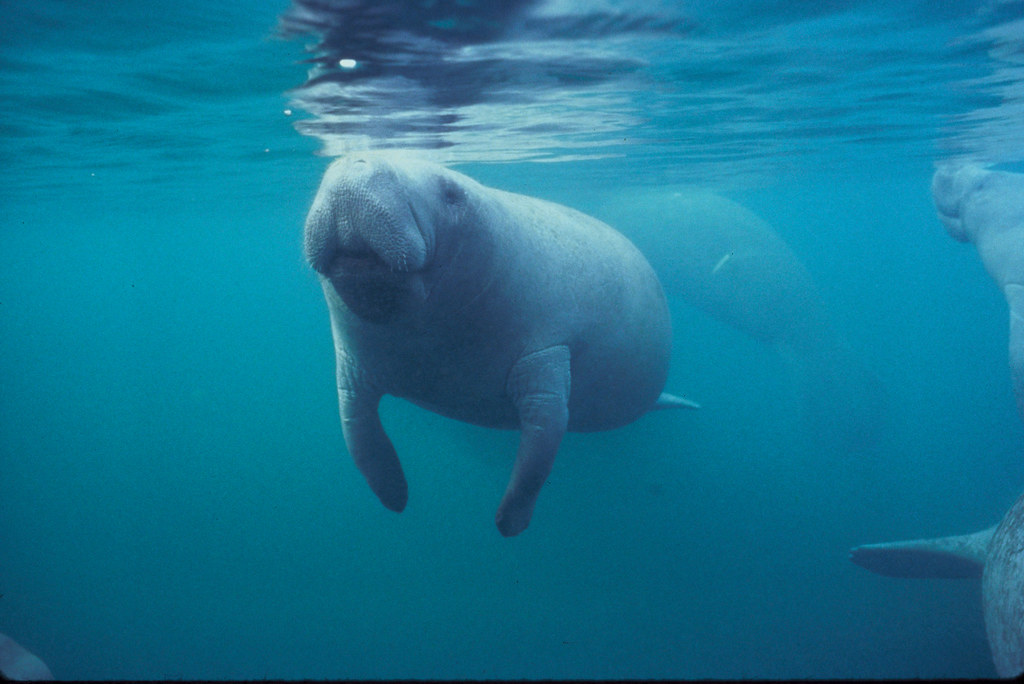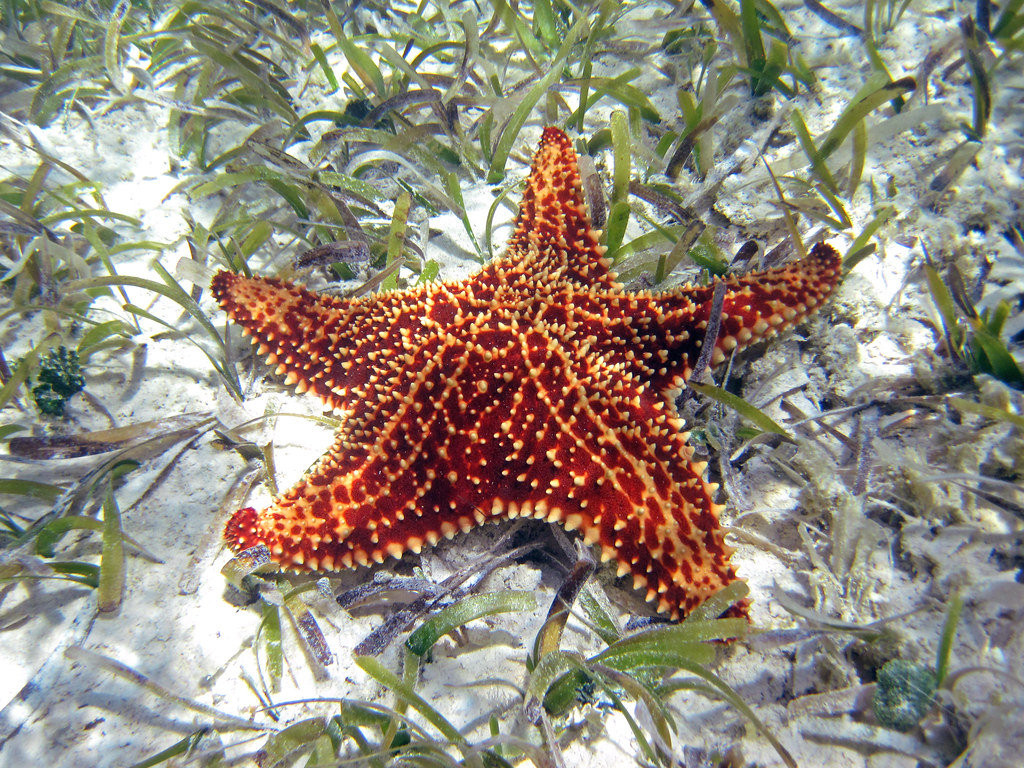
Thousands of different animal species roam the earth, so it’s not always easy determining what the slowest animal is. This guide, however, can help you narrow down the top contenders. From sloths to snails, this guide has it all. Keep on reading to find out what the slowest animal in the world is!
What is the slowest animal in the world?
It might be hard to imagine how slow these animals are by themselves, so consider using humans as a point of comparison. Humans have an average walking speed of 2.5 to 4 miles per hour. When running, humans have an average speed of 6.2 to 8 miles per hour.
With these numbers in mind, let’s now dive into this compendium of the slowest animals in the world!
Koala
Scientific name: Phascolarctos cinereus

The koala is a marsupial native to Australia. It is a fluffy creature with round ears, a large nose, and a stout body. These tree-hugging creatures may capture your heart in the blink of an eye, but they are one of the slowest animals in the world.
Koalas are arboreal mammals, so they spend more time climbing trees than running on the ground. They also have a slow metabolism with a low-nutrient diet. They mostly eat eucalyptus leaves, and they don’t move around much throughout the day.
These factors make it hard for koalas to adapt to sprinting on the ground. Their average speed is only around 6 miles per hour. However, when the need arises, the koala can run 15 mph. They can, however, only run for short distances as they tire quickly.
American Woodcock
Scientific name: Scolopax minor
The American Woodcock is a type of bird known for its “sloth-like” pace of 5 miles per hour. This speed might not seem that slow, but most birds can fly at a speed of over 37 mph, with some species going past 62 mph. This makes the American woodcock the world’s slowest flying bird in the world.
The American woodcock lives in the forests of North America. It is around 10 to 12 inches long with an average weight of 5 to 8 ounces. It is a popular game bird among hunters, with an average of 540,000 killed yearly. Despite this, the American woodcock’s population is of Least Concern.
Other names for the American woodcock include “timberdoodle”, “bogsucker”, and “Labrador twister”.
Manatee
Scientific name: family Trichechidae, genus Trichechus

The manatee isn’t the slowest animal in the world, but it is one of the slowest swimmers at an average speed of 3 to 5 mph.
Also known as “sea cows”, manatees are fully aquatic mammals. There are three species of manatees, namely the Amazonian manatee, the West Indian manatee, and the West African manatee.
They live in the coastal regions of West Africa, the Caribbean Sea, the Amazon basin, and the Gulf of Mexico. Manatees have big, gray bodies with paddle-like flippers. They grow around 13 feet long and weigh around 1,300 lbs.
Like koalas, manatees can have short bursts of speed. When necessary, manatees can swim up to 20 mph. However, there are only a few occasions that might call for this as manatees don’t have any true predators. Unfortunately, manatees are listed as Vulnerable by the International Union for Conservation of Nature (IUCN) because of overhunting.
Gila Monster
Scientific name: Heloderma suspectum
You wouldn’t expect a large, venomous lizard as a candidate for the slowest animal in the world, but the Gila monster is quite the sluggish animal. The Gila monster is a reptile native to the southwestern U.S. It grows up to 22 inches long and could weigh around 1.5 to 3 lbs.
Despite its impressive size, the Gila monster moves at a slow pace of around 1 mile per hour. It mostly eats prey that is easy to catch, such as newborn mammals or bird eggs.
As a venomous lizard, the Gila monster has a powerful venom. This venom is rarely fatal to humans, but its monster bite is also very painful. At times, the Gila monster might even chew a victim’s arm to release more venom into a deeper wound.
Slow Loris
Scientific name: family Lorisidae, genus Nycticebus

The slow loris isn’t the slowest animal in the world, but it certainly lives up to its name. The slow loris is a nocturnal primate, and it moves at a pace of 1.18 miles per hour.
Its slow movement and cute appearance can be deceiving as these creatures are far from harmless. Slow lorises are actually the only venomous primates in the world. They have toxins in their mouths, and they have poison glands on their elbows too.
There are currently seven recognized species of the slow loris. These are the Sunda slow loris; the Bengal slow loris; the Philippine slow loris; the Javan slow loris; the Bornean slow loris; the Bangka slow loris; and the Kayan River slow loris.
Galapagos Tortoise
Scientific name: Chelonoidis niger
The Galapagos giant tortoise, or simply the Galapagos tortoise, is the largest living tortoise species. It is native to the Galapagos Islands, and it has a lifespan of over 150 years.
While it isn’t the slowest animal on earth, the Galapagos tortoise is far from being fast. It has an average speed of around 0.16 to 0.2 miles per hour. As a herbivore, the Galapagos tortoise forages for food for eight to nine hours a day. They eat berries, cacti, and ferns.
The Galapagos tortoise also likes to rest and bathe in mud wallows and shallow pools. Whether on land or in water, however, the Galapagos tortoise remains a slow animal.
Three-toed Sloth
Scientific name: family Bradypodidae, genus Bradypus

Most people believe the three-toed sloth is the slowest animal ever. Many also view sloths as lazy animals, and they aren’t far from the truth. The three-toed sloth moves at an average pace of 1 foot per minute. It moves so slowly that algae grow on its fur.
You might wonder, “why are sloths so slow?”. The three-toed sloth is a mammal with extremely long arms and claws, which help them hang idly on tree branches.
While they are equipped to live on trees, they aren’t adept at walking. They have weak hind legs, and they can’t walk or run. Sloths can only dig into the earth and pull their bodies forward with their front legs.
Dwarf Seahorse
Scientific name: Hippocampus zosterae
The Dwarf Seahorse is a seahorse species living in the waters of the Atlantic Ocean, the Caribbean Sea, and the Gulf of Mexico. It is the smallest seahorse you’ll find in the United States as it is only an inch tall.
Despite its lightweight size, the seahorse isn’t a fast swimmer. In fact, the Guinness World Records recognizes the dwarf seahorse as the slowest-moving fish in the world. Its fastest record was a speed of around 5 feet per hour.
Their small size and slow pace made them popular aquatic pets, especially in the 1960s. They are also popular ingredients for traditional Chinese medicine.
Starfish
Scientific name: class Asteroidea

As its name suggests, the starfish, or “sea star”, is a star-shaped aquatic animal. There are around 1,900 species of starfish, and they live in seabeds all over the world. This slow-moving animal moves at a pace of around 5.9 inches per minute.
The starfish are invertebrates that usually have five arms and tube feet. The latter it uses to move across the ocean floor, around 20,000 feet below the surface.
Because it can’t hunt, the starfish is an opportunistic feeder. Some species, however, can capture other small and slow-moving animals. They mostly eat shellfish, such as oysters, mussels, and clams.
Banana Slug
Scientific name: family Ariolimacidae, genus Ariolimax
Another candidate for the slowest animal in the world is the banana slug. The banana slug moves at a staggering pace of around 6 and a half inches per minute or around 0.006 miles per hour.
Banana slugs have one muscular foot which secretes mucus. This mucus then absorbs water around the slug to make slime that will lubricate the slug’s path, helping them crawl easier.
There are several species of a banana slug, and they are usually bright yellow. One example is the Pacific banana slug, which is the second-largest terrestrial slug in the world. It grows up to 9.8 inches long with an average weight of 4.1 ounces.
Garden Snail
Scientific name: Cornu aspersum

How fast is a snail? A garden snail moves at a slow pace of around half an inch per second. The garden snail is the most well-known land snail species.
It has a soft brown body and a thin shell that is usually around 1 inch in diameter. Like the banana slug, the garden snail releases mucus to help lubricate its path.
Snails might be among the slowest animals in the world, but that doesn’t mean they can’t race. In fact, snail racing is a popular form of entertainment, especially in the United Kingdom. Pet owners train their snails and have them compete with other snails to see who is the fastest.
Sea Anemone
Scientific name: order Actiniaria
What many consider to be the slowest animal on earth is the sea anemone. Sea anemones are colorful animals that live in various oceans of the world. Like starfish, sea anemones also live in the depths of the water. However, some also live closer to the shore, while some even float on the surface.
On average, sea anemones move less than an inch per hour. They have a pedal disc that helps them move, but they usually cling to rocks or coral reefs.
Sea anemones are predators, and they eat plankton or small fish. Like jellyfish, they have stinging tentacles which they can use to sting their prey. After paralyzing its prey, the sea anemone uses its tentacles to bring the fish to its mouth.
Was this page helpful?
Our commitment to delivering trustworthy and engaging content is at the heart of what we do. Each fact on our site is contributed by real users like you, bringing a wealth of diverse insights and information. To ensure the highest standards of accuracy and reliability, our dedicated editors meticulously review each submission. This process guarantees that the facts we share are not only fascinating but also credible. Trust in our commitment to quality and authenticity as you explore and learn with us.
